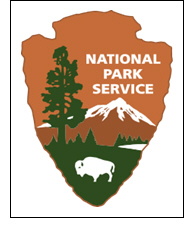From Yosemite to Acadia, you can now add a motor to your bike
If you go to a National Park, riding a bike is one of the best ways to get around—that practical slot between over-walking for 20-plus miles and tarnishing the “outdoor feel” by hauling things around in a car. Of course, if you’re out of town, transporting the family, packing camping equipment, the car makes sense. Nowadays, you might want to consider bringing a new kind of bike along. Electric bicycles are now allowed in all National Parks in the U.S.
For one, this is as good an indicator of e-bike popularity as we’ve had since their emergence, and vague studies that generally don’t have a wide enough participant pool to collect data from. These “trendy” items are clearly growing in popularity if the National Park Service is taking notice to accommodate them.
Why put a motor on a bicycle? Isn’t the whole feel of riding a bike supposed to integrate exercise, effort, and physical engagement? For many, yes. But consider these demographics and scenarios: the elderly, who can use a motor as an assist mechanism. The disabled, who can do the same, to varying degrees of effectiveness. The working, who can choose to turn the motor on or off depending on the task and terrain at hand. And the regulars/exercisers, who are bound to encounter a steep hill from time to time (think Canyonlands in Utah or Shenandoah in Virginia). Here’s the official press release from the National Park Service:
| Washington, DC – September 2019 / Newsmaker Alert / On August 30, the National Park Service announced a new electric bicycle (e-bike) policy for national parks, expanding recreational opportunities and accessibility. The policy supports Secretary’s Order 3376, signed by U.S. Secretary of the Interior David Bernhardt on August 29, that directs Department of the Interior (DOI) bureaus to create a clear and consistent e-bike policy on all federal lands managed by the Department. The policy also supports Secretary’s Order 3366 to increase recreational opportunities on public lands.
Washington, DC – September 2019 / Newsmaker Alert / On August 30, the National Park Service announced a new electric bicycle (e-bike) policy for national parks, expanding recreational opportunities and accessibility. The policy supports Secretary’s Order 3376, signed by U.S. Secretary of the Interior David Bernhardt on August 29, that directs Department of the Interior (DOI) bureaus to create a clear and consistent e-bike policy on all federal lands managed by the Department. The policy also supports Secretary’s Order 3366 to increase recreational opportunities on public lands.
A majority of states have adopted e-bike policies, most following model legislation that allows for the 3 classes of e-bikes to have access to bicycle trails. The NPS e-bike policy seeks to provide some consistency with the state rules applying where park units are located.
“As more Americans are using e-bikes to enjoy the great outdoors, national parks should be responsive to visitors’ interest in using this new technology wherever it is safe and appropriate to do so,” said National Park Service Deputy Director P. Daniel Smith. “They make bicycle travel easier and more efficient, and they provide an option for people who want to ride a bicycle but might not otherwise do so because of physical fitness, age, disability, or convenience, especially at high altitudes or in hilly or strenuous terrain.”
This new policy will enable visitors to use e-bikes, low-speed electric bicycles with power assistance, in the same manner as traditional bicycles, allowing them on park roads, paved or hardened trails, areas designated for off-road motor vehicle use and administrative roads. The operator of an e-bike may only use the motor to assist pedal propulsion. The motor may not be used to propel an e-bike without the rider also pedaling, except in locations open to public motor vehicle traffic.
Similar to traditional bicycles, e-bikes are not allowed in designated wilderness areas. Park superintendents will retain the right to limit, restrict, or impose conditions of bicycle use and e-bike use in order to ensure visitor safety and resource protection. Over the coming month, superintendents will work with their local communities, staff and partners to determine best practices and guidance for e-bike use in their parks. Visitors should check the website of the park they plan to visit for details about where e-bikes are permitted and any other considerations specific to that park.
E-bikes make bicycle travel easier and more efficient, because they allow bicyclists to travel farther with less effort. When used as an alternative to gasoline- or diesel-powered modes of transportation, e-bikes can reduce greenhouse gas emissions and fossil fuel consumption, improve air quality, and support active modes of transportation for park staff and visitors. Similar to traditional bicycles, e-bikes can decrease traffic congestion, reduce the demand for vehicle parking spaces, and increase the number and visibility of cyclists on the road.
A PDF copy of the National Park Service’s new e-bike policy is available online.

 September 5, 2019
September 5, 2019 
No comments yet... Be the first to leave a reply!